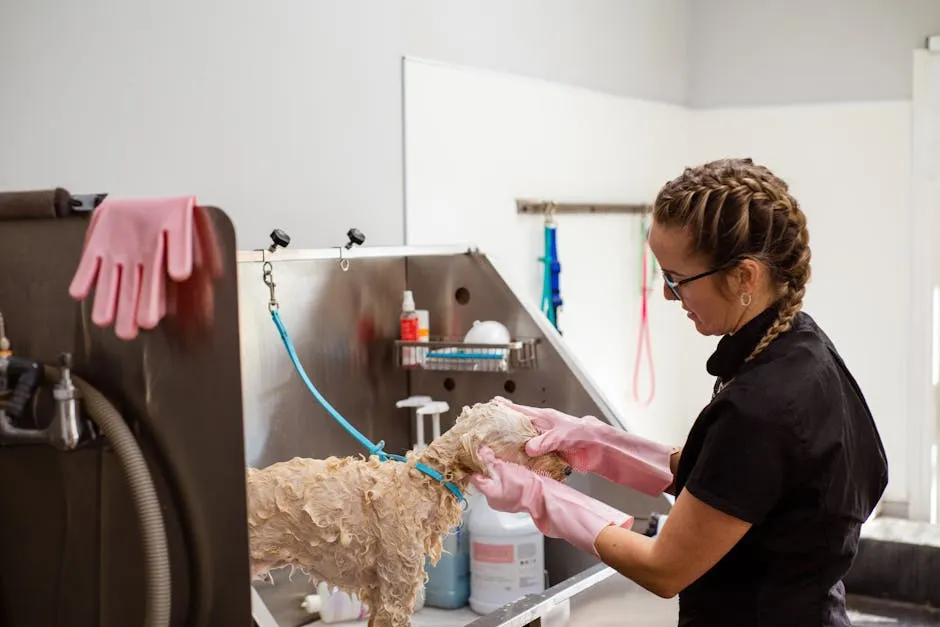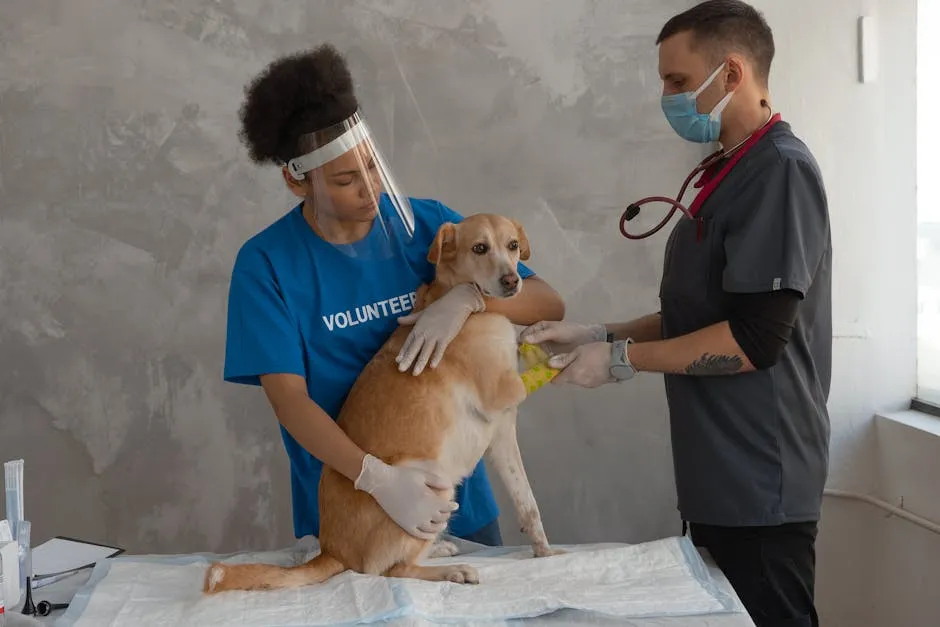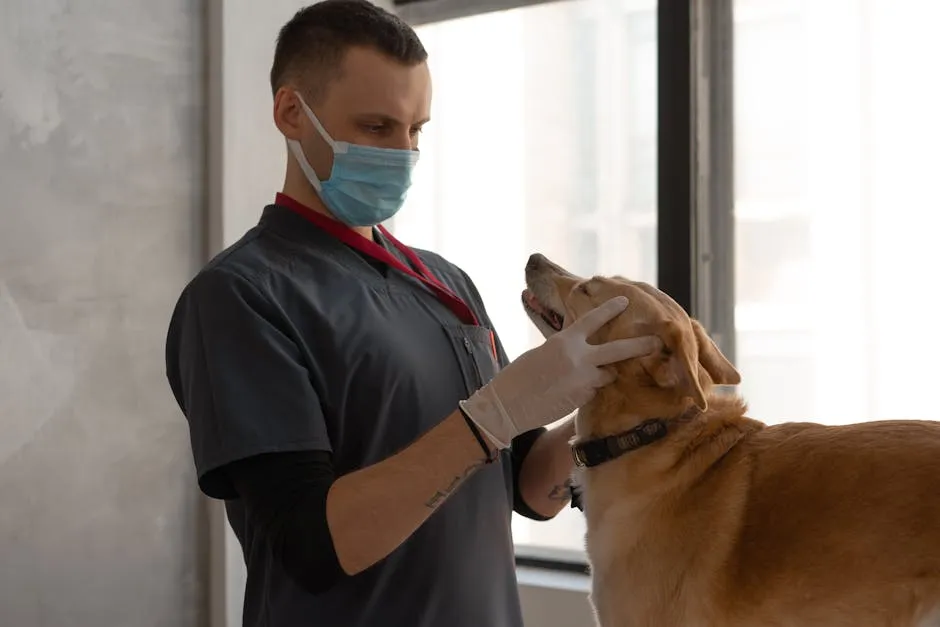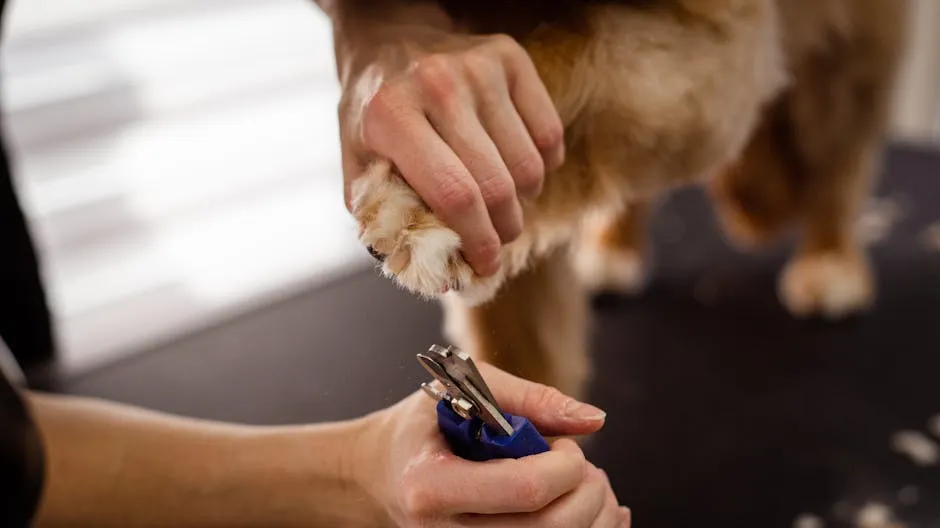Introduction
Ringworm is a common fungal infection in dogs. Despite its name, it isn’t caused by a worm. Understanding ringworm is crucial for dog owners. Early recognition helps in preventing its spread to other pets and humans.
To keep your furry friend safe from various ailments, consider investing in a Zymox Enzymatic Ear Cleanser for Dogs. It’s like a spa day for your pup’s ears, helping to keep them clean and free from infections. Trust us, they’ll appreciate the attention!
Summary and Overview
Ringworm, medically known as dermatophytosis, occurs due to specific fungi. The primary culprits are Microsporum canis, Microsporum gypseum, and Trichophyton mentagrophytes. This infection is prevalent in dogs and can affect animals of all ages.
Notably, ringworm can be contagious to humans, making it a zoonotic concern. Symptoms may include hair loss, scaly skin, and itchy patches. Understanding how it spreads, diagnosed, and treated is vital. Proper management not only helps the infected dog but also protects the entire household.
The impact of ringworm can extend beyond the dog itself, leading to anxiety for owners about contagiousness and treatment costs. Staying informed about ringworm can help mitigate these concerns and ensure that both pets and owners remain healthy. And while you’re at it, grab a Vet’s Best Dog Toothbrush and Toothpaste Set to keep those pearly whites in check!

What is Ringworm?
Ringworm, or dermatophytosis, is a fungal infection affecting the skin, hair, and nails. The fungi responsible for this condition belong to a group known as dermatophytes. The most common type, Microsporum canis, accounts for about 70% of cases in dogs. Other fungi, like Microsporum gypseum and Trichophyton mentagrophytes, also contribute to infections.
Despite its misleading name, ringworm is not a worm. Instead, the term comes from the characteristic ring-like lesions that can appear on the skin. This infection thrives in warm, moist environments and can easily spread through direct contact with an infected animal or contaminated surfaces. To help combat this, consider using a Nature’s Miracle Stain and Odor Remover to keep your home fresh and clean!
Misconceptions about ringworm often lead to confusion. Many believe it only affects certain breeds or that it’s harmless, which is not the case. Ringworm can pose risks not just to dogs but also to humans, especially children and those with weakened immune systems. Statistics show that ringworm is quite common, affecting around 3-10% of dogs in some areas. If you suspect your dog has ringworm, consulting a veterinarian is crucial. Early diagnosis and treatment can help prevent further spread and ensure your furry friend remains healthy.

How is Ringworm Transmitted?
Ringworm is highly contagious. It spreads through direct contact with infected animals or contaminated surfaces. Dogs can easily pick up the spores from other pets, humans, or items like grooming tools, bedding, and food bowls.
These fungal spores can survive in the environment for up to 18 months. This resilience makes it essential to maintain a clean living space for your pet. High humidity and broken skin can further increase the risk of infection. To help with this, consider using a PetFusion Ultimate Dog Bed for a comfy spot that keeps your pup cozy and less prone to skin issues.
Dogs with compromised immune systems or existing skin issues are more susceptible. Grooming practices also play a role in transmission. Regularly cleaning tools and avoiding shared items can help minimize the spread. For more information on how grooming can help, check out the top grooming practices for double-coated dogs to prevent excessive shedding.
Understanding proper grooming techniques can significantly reduce the risk of ringworm transmission in dogs. top grooming practices for double-coated dogs to prevent excessive shedding
To prevent ringworm, prioritize hygiene at home. Regularly disinfect your dog’s environment and wash their bedding. Implementing these practices will help keep your furry friend safe from this pesky infection. Additionally, a good Furminator Undercoat Deshedding Tool for Dogs can make a world of difference in keeping your dog’s coat healthy!

Symptoms of Ringworm in Dogs
Symptoms of ringworm can vary widely among dogs. Common signs include circular patches of hair loss and red, scaly skin lesions. These patches often start small but can grow over time.
Affected areas are most commonly found on the face, ears, paws, and tail. Some dogs may also experience itchiness, leading to further irritation and hair loss. In more severe cases, the nails can become brittle and discolored.
Interestingly, not all dogs show symptoms. Some may carry the fungus without visible signs, making monitoring crucial. Studies show that hair loss and skin lesions occur in about 80% of infected dogs.
If you notice any of these symptoms, it’s important to consult your veterinarian. Early detection and treatment can help prevent the spread of ringworm to other pets and humans. Stay vigilant and keep an eye on your dog’s skin health. A TropiClean Natural Flea and Tick Prevention for Dogs can help keep those pesky pests at bay too!

How is Ringworm Diagnosed?
Diagnosing ringworm in dogs involves several methods. Veterinarians often start with a Wood’s lamp test. This special light can make some fungal infections glow. However, not all cases fluoresce, so further testing is necessary.
A fungal culture is another key diagnostic method. This involves taking samples of hair or skin and growing them in a lab. Results can take from a few days to three weeks. Fungal cultures are highly accurate, identifying about 85% of infections.
Microscopic examination of hair or skin samples can also aid diagnosis. This method allows veterinarians to spot fungal structures directly. In some cases, PCR testing is used for rapid detection of fungal DNA. This method is more expensive but can yield quicker results.
For accurate diagnosis, it’s crucial to consult your veterinarian. Early identification ensures timely treatment and helps prevent the spread of ringworm to other pets and humans.

Treatment Options for Ringworm in Dogs
Treating ringworm typically involves a combination of methods. Topical treatments, like antifungal shampoos and creams, are often the first step. Products containing miconazole or terbinafine are commonly used. These can help eliminate the fungus from the skin surface. Treatment generally lasts several weeks, with regular applications needed for effectiveness.
Oral antifungal medications may be necessary for more severe cases. Drugs like griseofulvin or itraconazole are commonly prescribed. Treatment duration for oral medications usually spans four to eight weeks, depending on the dog’s response.
Environmental management is equally important. Ringworm spores can linger in the home for months. Regularly cleaning and disinfecting surfaces, bedding, and grooming tools can reduce the risk of reinfection. Using a bleach solution for contaminated areas is often recommended. And don’t forget about the cleaning power of a Bissell Pet Hair Eraser Handheld Vacuum for those pesky pet hairs!
Completing the entire treatment course is crucial. Stopping too soon can lead to a recurrence of the infection. Always follow your veterinarian’s advice for the best outcomes. Proper treatment not only helps your dog recover but also protects other pets and family members from infection.

How Long Will My Dog Be Contagious?
If your dog has ringworm, you might wonder how long they’ll be contagious. Generally, infected dogs can remain contagious for about three weeks with proper treatment. However, this timeline can vary. Factors like your dog’s health and adherence to treatment protocols will play a significant role.
It’s crucial to follow your vet’s recommendations closely. Inconsistent treatment can prolong contagiousness. For example, if you stop treatment early, the infection could persist longer, allowing it to spread to other pets or humans.
Statistics show that effective treatment can significantly reduce the risk of contagion. Consistent medication and environmental cleaning are vital. Always monitor your dog during this period. If symptoms persist or worsen, consult your veterinarian immediately. Keeping a close eye on your furry friend can help prevent further complications. And to help keep your dog entertained while they recover, consider a KONG Classic Dog Toy!

Prevention Strategies for Ringworm in Dogs
Preventing ringworm in dogs requires vigilance and good hygiene practices. Regular grooming is essential. Brush your dog frequently to remove loose hair and skin flakes. This can minimize the chance of spreading spores around your home.
Be aware of symptoms, especially in new pets. If you bring a new dog home, monitor them closely for signs of ringworm. Isolation is important for infected pets. Keep them away from other animals until treatment is complete.
Hygiene practices play a crucial role. Wash your dog’s bedding and toys regularly to eliminate any potential spores. If your dog has been exposed to contaminated environments, disinfect grooming tools and surfaces frequently. A pack of AmazonBasics Dog Training Pads can be a lifesaver for those accidental messes!
Research indicates that poor hygiene can lead to higher reinfection rates. Regular vet check-ups can also help catch issues early. By staying proactive, you can keep your pet and your home safe from ringworm.

Conclusion
In summary, ringworm in dogs is a fungal infection that demands attention. We’ve covered its symptoms, transmission, diagnosis, and treatment options. Vigilance is essential. Prompt treatment helps prevent the spread to other pets and humans.
As a responsible pet owner, it’s vital to maintain good hygiene practices. Regular grooming and cleaning your dog’s environment can help avoid ringworm outbreaks. Always consult your veterinarian if you suspect your dog might have this infection. Your proactive approach can keep your furry friend healthy and happy. And for those lazy afternoons, don’t forget a fun toy like the Outward Hound Hide-A-Squirrel Puzzle Toy for mental stimulation!

FAQs
Can dogs get ringworm from other animals?
Yes, dogs can contract ringworm from various animals. This infection spreads through direct contact with an infected pet or contaminated surfaces. Cats are common carriers, but rodents and livestock can also transmit the fungus. Always be cautious when introducing new pets to your household.
How long does it take for ringworm to heal in dogs?
Typically, ringworm can heal in four to eight weeks with proper treatment. Factors like the severity of the infection and the dog’s overall health can influence recovery time. Consistent treatment is crucial to speed up healing and reduce the risk of reinfection.
Is ringworm in dogs contagious to humans?
Yes, ringworm can easily spread from dogs to humans, especially through direct contact. Children and individuals with weakened immune systems are particularly vulnerable. To minimize risk, practice good hygiene, such as washing hands after handling your dog and avoiding close contact with infected pets.
What are the common signs of ringworm in dogs?
Common symptoms include circular patches of hair loss, scaly or crusty skin, and itchiness. Affected areas often appear on the face, ears, and paws. It’s important to monitor your dog closely for these signs and consult your veterinarian for a proper diagnosis.
Can I use human antifungal treatments on my dog?
Using human antifungal treatments on dogs is not advisable without veterinary guidance. Dogs may react differently to medications, and some human treatments can be toxic to pets. Always consult your veterinarian for safe and effective treatment options tailored to your dog’s needs.
Please let us know what you think about our content by leaving a comment down below!
Thank you for reading till here 🙂
All images from Pexels





